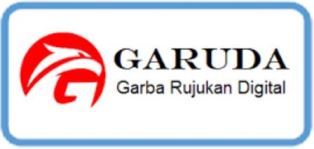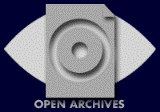- Home
- About the Journal
- Submissions
Submissions
Registration and login are required to submit items online and to check the status of current submissions.
Already have a Username/Password for Voteteknika (Vocational Teknik Elektronika dan Informatika)?
Go to Login
Author Guidelines
General guidelines:
- The manuscript must be original, no plagiarism, and has never been published nor under consideration in another scientific journal.
- Articles are written by a program Microsoft Word to the top, A4 size paper, page margins: top 19mm, left 2 cm, bottom 28mm, and right 14.32mm, typed with single spacing, font Times New Roman 10, text format in two-column.
- Please submit your manuscript file as a Microsoft Word extension Document (DOC) or Rich Text Format (RTF). Manuscript Template link https://docs.google.com/document/d/1T06YMLRBqHWR3PlGWhVjUw22Tc5TNbnp/edit?usp=sharing&ouid=109726211607516441038&rtpof=true&sd=true
- The title and abstract should be written in English, the content of the manuscript can be written in Bahasa Indonesia or English.
- For submission, please log in and submit your manuscript through the link http://ejournal.unp.ac.id/index.php/voteknika/user/register
- For the March issue, we accept submission from January to February, and the editing and revision process is scheduled for March, For September issue is from July to August. The editing and revision process is scheduled for September.
- The manuscript can be accepted without repair, refurbishment accepted or rejected, and a rejected article is not returned unless requested by the author.
- The length of the scientific manuscripts shall not exceed 3500 words or approximately 5-10 pages, in which the included drawings, graphs, or tables (if any) are present.
- The terms in a foreign language or regional language in the text are written in italic.
Body of Manuscript:
In general, the structure of scientific articles research results and non-research scientific articles are relatively the same. In the non-research article, there is no method part. The structure of the research articles consists of 10 main sections: (1) Title (2) Ownership Line; (3) Abstract; (4) Keywords; (5) Introduction; (6) Research Methods; (7) Results and Discussion; (8) Conclusion; (9) Acknowledgments and (10) References. The structure of non-research scientific articles is divided into 9 main sections namely: (1) Title; (2) Ownership Line; (3) Abstract; (4) Keywords; (5) Introduction; (6) Discussion; (7) Conclusion; (8) Acknowledgments and (9) References. Each section is explained as follows.
a) Title
- The title should be concise and informative, no more than 12 words, including the liaison, and capital letters at the beginning of each word except the liaison. For the title to be short and succinct in 12 words, avoid connecting words and mentioning objects, places, or research materials in great detail.
- The title contains the keywords of the topic under study.
- Times New Roman 12 font type and bold, with single line spacing.
- Title in Indonesian or English, by the language used in the manuscript.
- Avoid using abbreviations, formulas, and references.
b) Ownership lines (authorship lines)
- The ownership line consists of two parts, namely author names and author institutional affiliation.
- Student affiliation follows the place where the student is studying.
- The names of the authors should be those who participate in the planning, execution, analysis of results, discussion, and report writing and academic/functional or bachelor degree positions not included, Times New Roman 11 fonts, row 1 space.
- The name of the institution is listed in full to the country's name, written under the author's name along with the postal address, email, and facsimile (if any) for correspondence purposes, Times New Roman 11 fonts, with 1 spaced line spacing.
- If the author is more than one person and comes from a different institution, then all addresses are listed by marking a small letter superscript behind the author's name in sequence.
- The name of the correspondence author is marked with an asterisk (*).
- Times New Roman font 11.
c) Abstract
- An abstract is written in summary and factual, covering research objectives, research methods, results, and conclusions.
- The abstract is written in one paragraph; written in two languages (Indonesian and English); with abstract lengths ranging from 100 - 200 words.
- Avoid unusual referrals and the use of abbreviations.
- Times New Roman 11 type font, with single line spacing.
d) Keywords
- Keywords consist of 5 words and/or word groups.
- Written in order of urgency of the word.
- Between keywords separated by commas (,).
- Avoid many connecting words (and, with, that and others).
- Times New Roman 11 letter type, with single line spacing.
e) Introduction
- Avoid the sub-sub in the introduction.
- The introduction should contain the background of problems, problems, and research objectives.
- Percentage of page length between 10-15% of the total length of a manuscript.
- References are shown by writing the author's family name / last name and year of issue, without page number.
- The theoretical basis is displayed in complete, concise, and completely relevant sentences to write scientific articles.
- The manuscript is written with a density of 1spaces, Times New Roman 11
f) Research Methods
- Inform briefly about the materials and methods used in the research, including the subjects/materials studied, the tools used, the design of the experiment or the design used, the sampling technique, the variables to be measured, the data retrieval technique, the analysis and the statistical model used.
- Avoid writing excessive statistical formulas.
- If using a well-known method, name the method name only. If necessary, specify the reference source used as a reference.
- For qualitative research, research methods can adjust.
- The manuscript is written with a density of 1 space, Times New Roman 11.
g) Results and Discussion
- The format of the results of research and discussion is not separated, considering the number of pages available for the author is limited.
- The manuscript is written with a density of 1 space, Times New Roman 11
- The results can be presented with support tables, graphics or images as needed, to clarify the presentation of results verbally.
- Tables and charts or captions are arranged in the form of a phrase (not a sentence) succinctly.
- Description of the image/graph is placed under the picture/graph, while the title of the table is placed on it. The title begins with a capital letter.
- Do not repeat writing numbers that have been listed in the table in the text of the discussion. If it will emphasize the results obtained should serve in other forms, such as percentage of difference. To show the number in question, just refer to the table that contains the number.
- In general international journals do not want statistical languages (such as different, treatment, etc) written in the discussion. Avoid copy and pasting tables of statistical analysis results directly from statistical data processing software.
- The discussion material mainly explores whether the results obtained are by the hypothesis or not, and point out the argument.
- Referral citation in the discussion should not be too long (if necessary avoid).
- Citation results of research or opinions of others should be abstracted and written in the sentence itself (not using the same sentence).
- A collection of similar research may be referred to in groups
h) Conclusion
- The conclusion should be the answer to the research question and expressed not in statistical sentences.
- Written along with one paragraph in essay form, not in numerical form.
- The manuscript is written with a density of 1 space, Times New Roman 11
i) Acknowledgments (Optional)
- Acknowledgments are generally placed after the conclusion.
- Contains gratitude to the funding agencies, and or individuals who have assisted in the execution of research and the writing of manuscripts.
- The manuscript is written with a density of 1 space, Times New Roman 11
j) References
General provision of bibliography:
- The references listed in the bibliography are only those references that are quoted in the manuscript.
- For the research articles, the references are referenced from about 40% of textbooks and 60% of scientific journal articles.
- Updates of referenced scientific journals shall be considered, at least as a result of relevant publications in the last 5 years.
- The bibliography is arranged alphabetically in alphabetical order of the author's name.
- Author's name: the name shown is the final name (surname) of the author followed by the initial (and middle name) abbreviation if any). If the author is more than one person, then the way of writing is the same.
- The writing of the reference title begins with a capital letter on each syllable, except for the conjunctive word.
- Any writing of the name, year, the title of the article and so on ends with a period (.) Before the next word continues. Special writing volume (number) journal is given a colon (:) without spacing.
- The manuscript is written with a density of 1 space, Times New Roman 11
- Examples of writing can be seen in the explanation of each type of literature worth mentioning.
Terms of reference writing by reference type:
If the library source is an article in a scientific journal, it is written in the following order: author's name. year. article title. the name of the journal. Volume (number): page (Journal name is skewed).
Example:
Beniwal, S., & Arora, J. (2012). Classification and feature selection techniques in data mining. International Journal of Engineering Research & Technology, 1(6), 1-6.
If the literature source is a textbook, it is written in the following order: author's name. year. book title. volume (if any). edition (if any). publisher city: publisher name (The title of the book is italicized).
Example:
Aggarwal, C. C., & Zhai, C. (Eds.). (2012). Mining text data. Springer Science & Business Media.
If the literature source is a translation book written following the sequence: the name of the original author. years of translation. title of translation book. volume (if any). edition (if any). translation. publisher city: publisher name (Book title in italics).
Example:
Bourdieu, P. 2010. Dominasi Maskulin. Terjemahan Stephanus Anwar Herwinarko. Yogyakarta: Jalasutra.
Steel, R.G.D. & Torrie, J.H. 1991. Prinsip dan Prosedur Statistika: Suatu Pendekatan Biometrik. Terjemahan B. Sumantri. Jakarta: PT Gramedia Pustaka Utama
If the source of the article in the collection of articles is written in the following order: the name of the author of the article. article title. in: editor name if any followed by Ed (if single) or Eds (if more than one) in parentheses. year. book title. volume (if any). edition (if any). publisher city: publisher name (The title of the book is italicized).
Example:
Ancok, D. Validitas dan Reliabilitas Instrumen Penelitian. dalam: Singarimbun M dan Efendi (Eds). 1999. Metode penelitian survey. Jakarta: LP3ES
Linz, J & Stephan, A. Some Thought on Decentralization, Devolution and The Many Varieties of Federal Arrangements. In: Joshua K (Ed). 2001. Crafting Indonesian Democracy. Bandung: Penerbit Mizan
If the source of the article in the proceedings is written in the following sequence: the name of the author. year. title of the seminar. title proceedings. the venue of the seminar. the timing of the operation (The article title is italicized).
Example:
Gonggrijp, R., & Hengeveld, W. J. (2007, August). Studying the Nedap/Groenendaal ES3B voting computer: A computer security perspective. In Proceedings of the USENIX workshop on accurate electronic voting technology (pp. 1-1). USENIX Association.
Submission Preparation Checklist
As part of the submission process, authors are required to check off their submission's compliance with all of the following items, and submissions may be returned to authors that do not adhere to these guidelines.
- The submission has not been previously published, nor is it before another journal for consideration (or an explanation has been provided in Comments to the Editor).
The submission file is in Microsoft Word (doc).
- The main body of manuscript is typed in double column, single-spaced, using Times New Roman 11-point font; employs italics, rather than underlining (except with URL addresses); and all illustrations, figures, and tables are placed within the text at the appropriate points, rather than at the end.
- The text is single-spaced; uses a 11-point font; employs italics, rather than underlining (except with URL addresses); and all illustrations, figures, and tables are placed within the text at the appropriate points, rather than at the end.
- The text adheres to the stylistic and bibliographic requirements outlined in the Author Guidelines, which is found in About the Journal.
- If submitting to a peer-reviewed section of the journal, the instructions in Ensuring a Blind Review have been followed.
- Where available, URLs for the references have been provided.
Copyright Notice
All authors who submit their paper for publication will abide by following provisions of the copyright transfer:
- The copyright of the paper rests with the authors. And they are transferring the copyright to publish the article and used the article for indexing and storing for public use with due reference to published matter in the name of concerned authors.
- The authors reserve all proprietary rights such as patent rights and the right to use all or part of the article in future works of their own such as lectures, press releases, and reviews of textbooks.
- In the case of republication of the whole, part, or parts thereof, in periodicals or reprint publications by a third party, written permission must be obtained from the Managing Editor of Voteteknika.
- The authors declare that the material being presented by them in this paper is their original work, and does not contain or include material taken from other copyrighted sources. Wherever such material has been included, it has been clearly indented or/and identified by quotation marks and due and proper acknowledgements given by citing the source at appropriate places.
- The paper, the final version of which they submit, is not substantially the same as any that they had already published elsewhere.
- They declare that they have not sent the paper or any paper substantially the same as the submitted one, for publication anywhere else.
- Furthermore, the author may only post his/her version provided acknowledgement is given to the original source of publication in this journal and a link is inserted wherever published.
- All contents, Parts, written matters, publications are under copyright act taken by Voteteknika.
- Published articles will be available for use by scholars and researchers.
- Voteteknika is not responsible in any type of claim on publication in our Journal.
Privacy Statement
The names and email addresses entered in this journal site will be used exclusively for the stated purposes of this journal and will not be made available for any other purpose or to any other party.



.png)


.jpg)




